Bangkok - A Blend of Traditional and Modern Images
9/30/20255 min read
Bangkok was the third Thai city I visited after Phuket and Hat Yai. Upon the arrival day, I landed at Don Mueang Airport with low expectations, thinking the city was only known for overrated tourist spots. A local driver picked me up, and on the way to Manhattan Hotel in the city centre, I observed Bangkok’s skyline, it had a moderate couple of old and modern architecture.
While heading to Manhattan Hotel at Sukhumvit Road, what struck me most was the chaotic traffic. It was crowded, noisy, and unruly, yet locals seemed perfectly adapted to it. Amid the bustle, I found charm in the street hawkers and vibrant tuk-tuks that brought life and colourful character to the city. These two economic agents of Bangkok made me slightly offered me a sense of relief before I finally settled in for a good rest at the hotel. After checking in, I just unwound for a while, took a short stroll around the hotel, and prepared for the next day's activities.
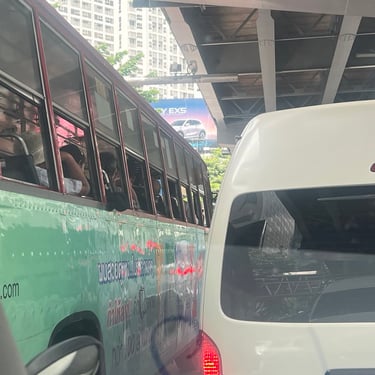

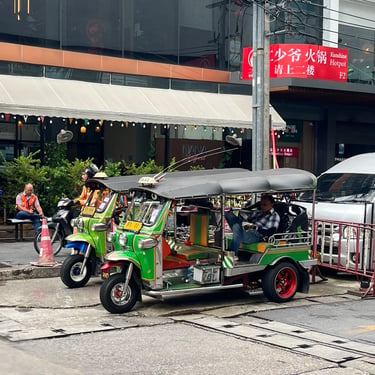
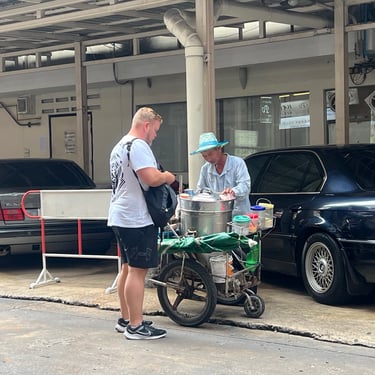
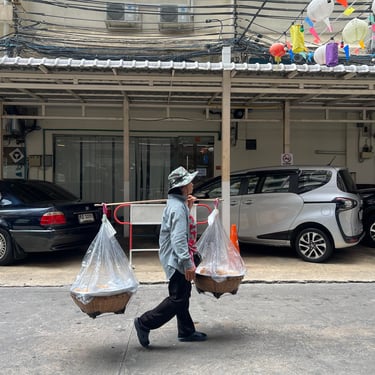
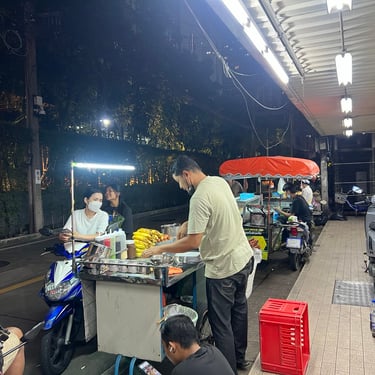
The main purpose of my visit to Bangkok was to explore urban parks that embody innovation and unconventional design. I kicked off my trip with a visit to the newly launched Dusit Central Park, a rooftop landscape project. Although the area was relatively small, its creative use of slopes and layered walkways showcased impressive design ingenuity. The park not only addressed spatial limitations but also offered an adventurous experience through its multi-level paths, terraced tropical plants, and a dramatic waterfall. Visitors can enjoy a panoramic view of the city while relaxing in this elevated green space.
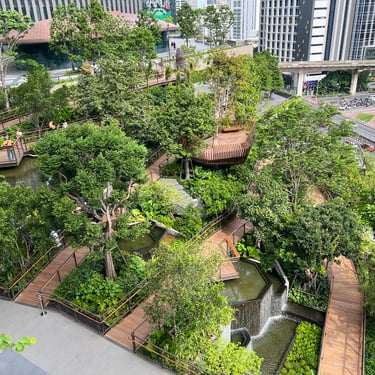
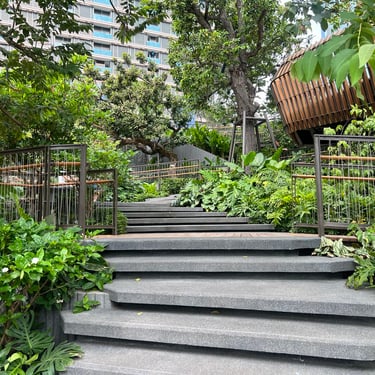
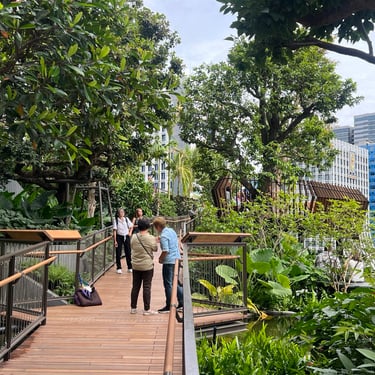
In the second half of the day, I visited Benchakitti Forest Park, a project developed on a former military site that now serves as the green lung of Bangkok. The park’s scale is impressive, comprising about 30% blue space and 70% green space. Benchakitti was initially designed to act as a “city sponge” to mitigate urban flooding. The park is divided into multiple zones, and its vastness made it impossible for me to explore everything in one visit.
I began my walk at a gallery housed in a brutalist-style building, which featured a massive city model built by groups of students. This detailed model offered a fascinating bird’s-eye view of Bangkok’s urban form. Afterward, we continued walking around the park. I was truly amazed by the composition of its varied-level walkways, carefully designed to frame vistas for both city and nature. The planting design was equally impressive, showcasing a wide diversity of species arranged to create a naturalistic look. Among all elements, I particularly loved the use of dried foliage as an alternative pathway surface, it is simple, sustainable, and beautifully organic.
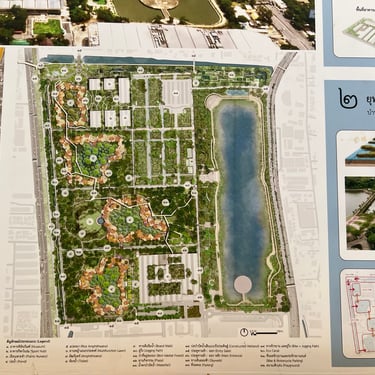
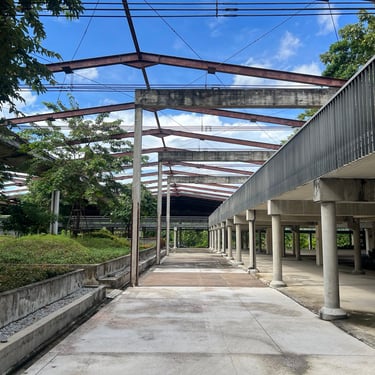
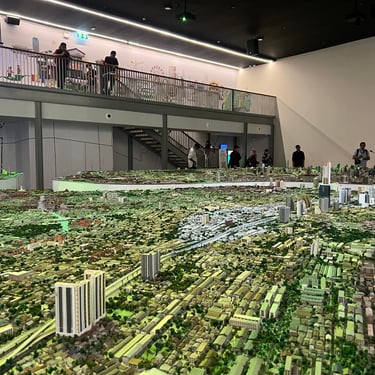
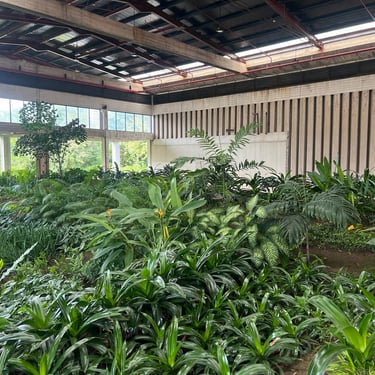
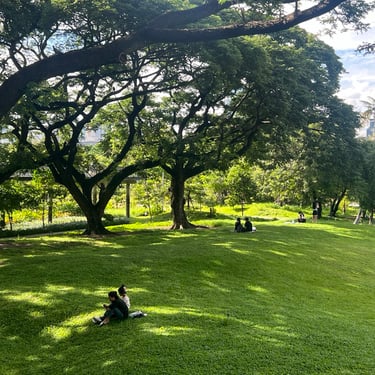

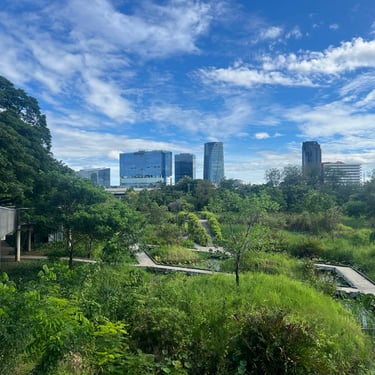

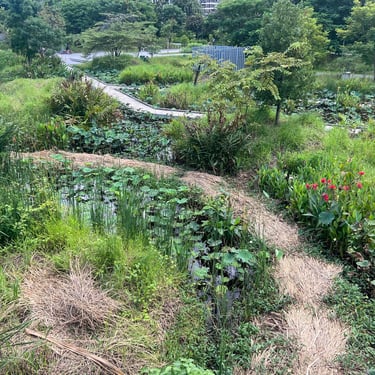
The next morning, I stopped by Nana Coffee Bangna, a modern cafe concealed beneath the highways. Beyond serving good coffee, the place enticed its visitors with its breathtaking architectural design. The building, painted almost entirely white, featured a layout where interior and exterior spaces were separated by multiple doors yet visually linked through glass walls. Coffee lovers could choose to sit either indoors or outdoors, where steel-crafted benches offered a unique and refreshing experience.

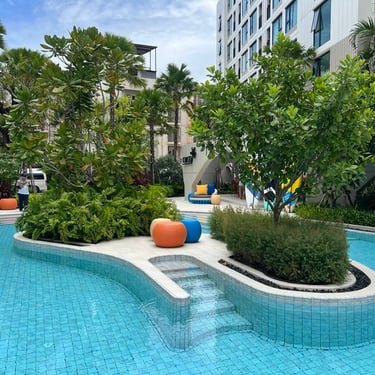
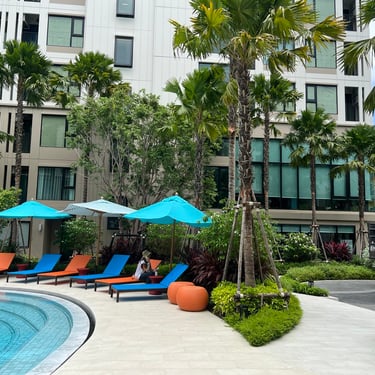
Before lunch, I managed to tour Kave COCO Bangsaen, a landscape project for a condominium located on the outskirts of the city. The design was colourful and organic, deserving credit to the landscape architect and contractors who successfully created such a fluid and natural form around the swimming pool area. The space evoked a beach-like vibe, complete with a man-made island in the pool and comfortable seating areas perfect for relaxation.
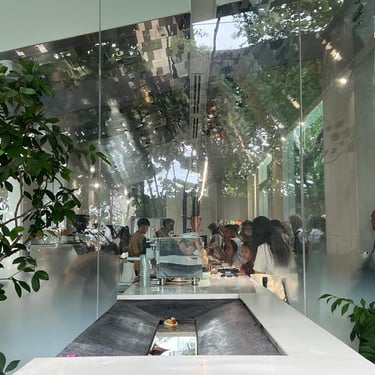
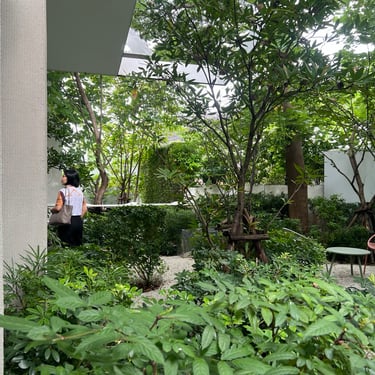
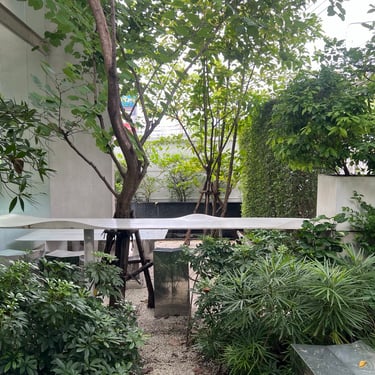
After lunch, before ending the second day of the trip, we visited Harudot Chonburi Coffee. I can confidently say that such an impressive cafe is hard to find, even in Kuala Lumpur. With a generous budget, the owner showcased a passion for art and architecture through a stunning design that blended indoor and outdoor spaces. I was totally deeply moved by the immaculate design. The outdoor area was therapeutic, occupied by a natural forest, surrounded by lush plants, gentle water sprays, and the soothing sounds of birds and waterfalls. With its calming atmosphere and reasonable prices, it is a perfect spot for Gen Z to enjoy desserts while reconciling with nature.
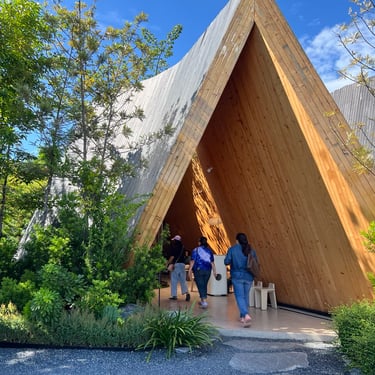
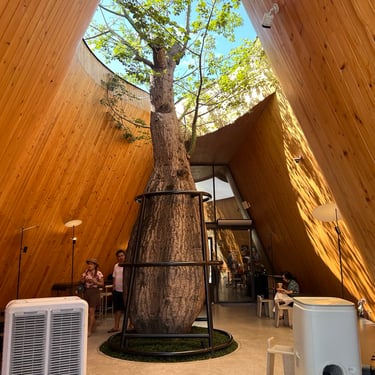
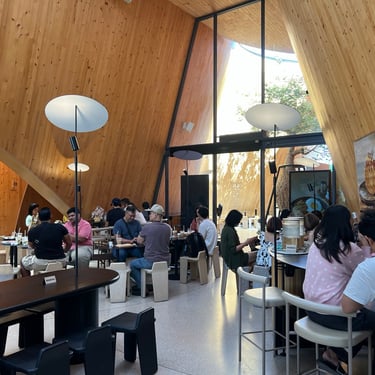
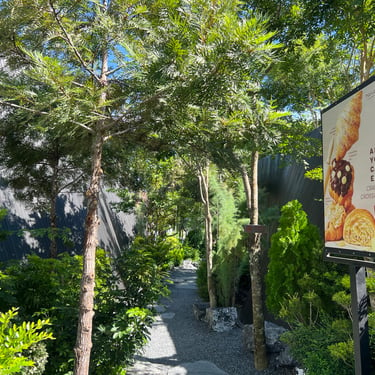
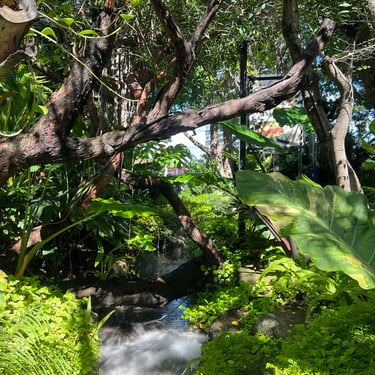
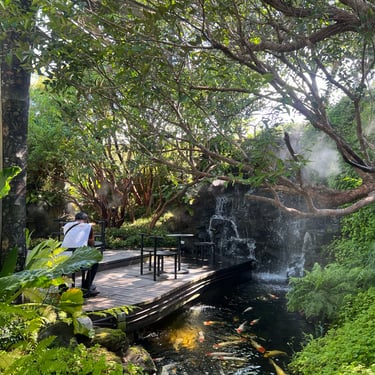
On the third day, I think these two parks were quite simple but carried a meaningful impact for the urban users in Bangkok. The first is called Suan San, a reclaimed landscape created to serve leisure purposes for the surrounding community. Although the site was small, it still provided a comfortable space for recreational activities such as jogging, playing mini soccer, and using the playground. Surrounded by low-income residents, this park is worthy of praise for its contribution to promoting equality in garden use among the Thai people.



The second is Lankila Pat 2, a very “cool” park developed beneath the highways. The noise from vehicles was softened by the happiness and joyful laughter of the park users, especially the children enjoying outdoor activities such as futsal, basketball, and tennis. In many cities, spaces like this are often associated with the homeless, but Bangkok has improved the quality of life for its citizens by providing greater opportunities to engage in sports. Besides enhancing social life, this approach indirectly helps reduce potential crime and improves the city’s image. With rustic residential areas surrounding the park, Lankila Pat 2 has defied the usual privilege of garden and park use once reserved for the wealthy.
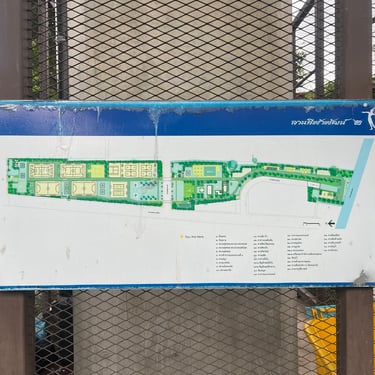
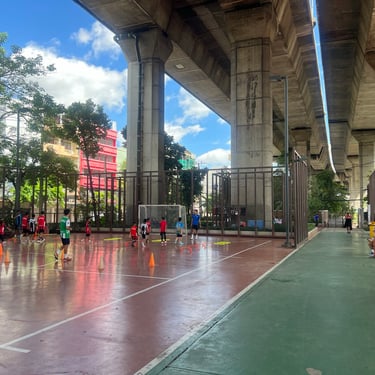

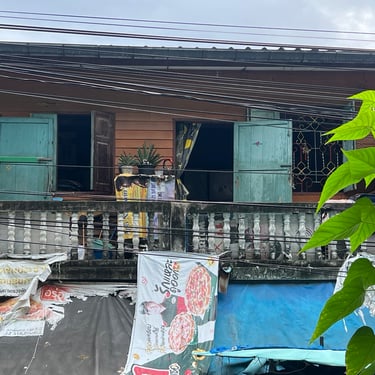
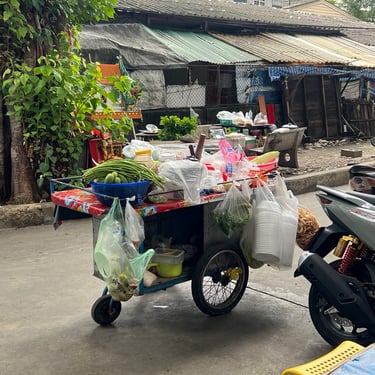

In the late evening, I went to the Happy and Healthy Bike Lane, located near Suvarnabhumi Airport. True to its name, I felt extremely happy and refreshed after taking a long walk on the elevated walkway. This walkway functions as a connector between the park and the airport, while also serving as a recreational space for the public to jog and cycle. The experience was truly extraordinary, as you could watch airplanes landing alongside vehicles on the surrounding roads. I wish this kind of creation could be replicated in certain locations in Malaysia.
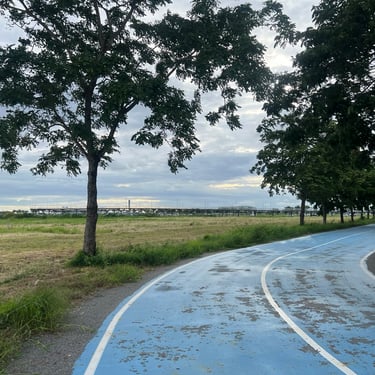

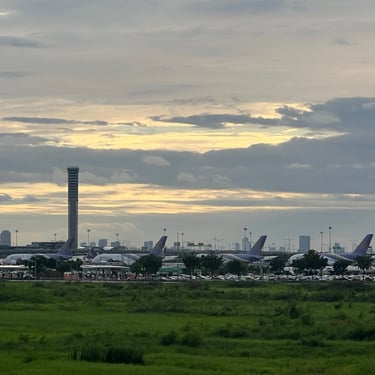
The day after, I went to One Bangkok, a shopping mall designed together with a green open space. Similar to TRX in Kuala Lumpur, the design showcases a modern look and serves as an ideal place for people to refresh. However, it could be improved by adding more shady trees. I believe the limited selection of plants was intended to keep the building’s view unobstructed, but this design choice compromised comfort due to the intense sunlight.
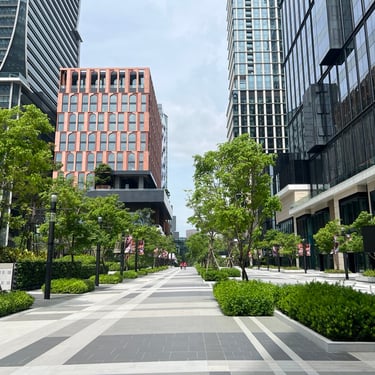

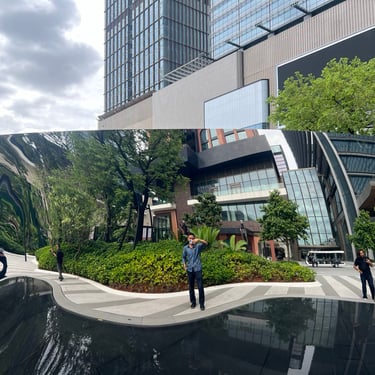
In the afternoon, I moved to another hotel to continue the trip. I spent the next two days in Bangkok without visiting any parks, focusing instead on wandering the streets, enjoying the nightlife, and meeting some friends. In simple words, it was time for me to paint the town red after feeling exhausted from the earlier visits.
Within those two days, I visited two offices, bought two incredible sketchbooks, and tried some local Thai desserts and noodles. The drawings were truly amazing, far beyond what I could ever match, haha!
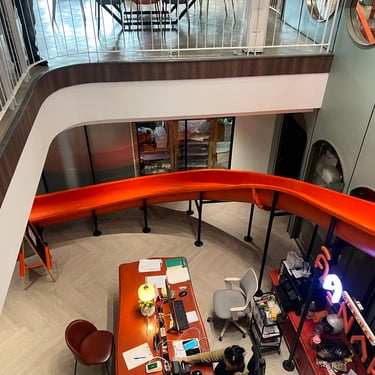
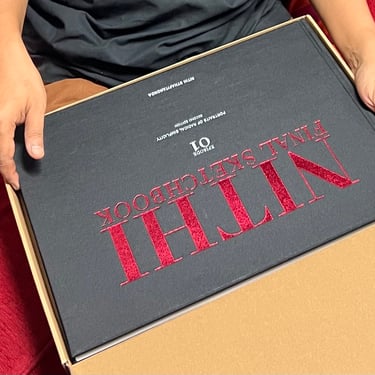
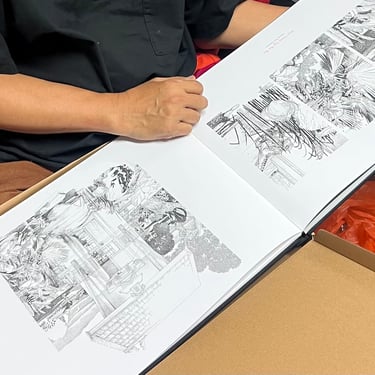
As for the food, I highly recommend trying the dessert. You won’t be disappointed, so you should trust me.
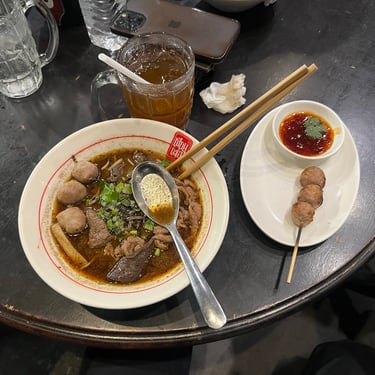
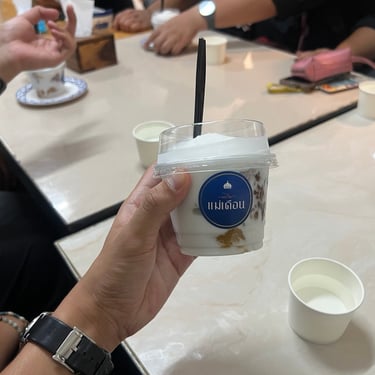

Besides the food, I think the night activities, such as taking the train, watching the fountain show, and visiting the mall and art galleries, were experiences I shouldn't have missed. To enjoy these, I went to Icon Siam to witness the fountain show, took a ride on the train (with Siam BTS Station being the busiest that night), and wandered around observing the lively behaviour of the Thai people. Not to forget, I sadly want to mention that finding a prayer room or mosque in Bangkok is quite difficult, so it is better to manage your time wisely.
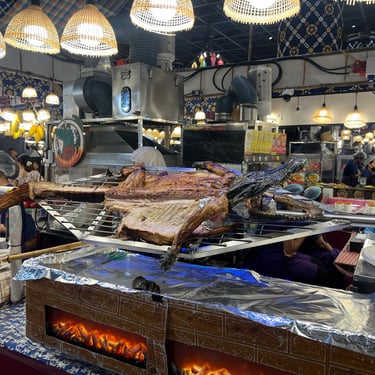
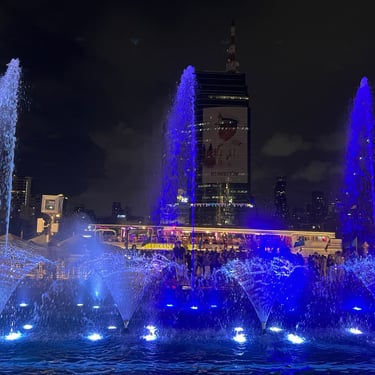
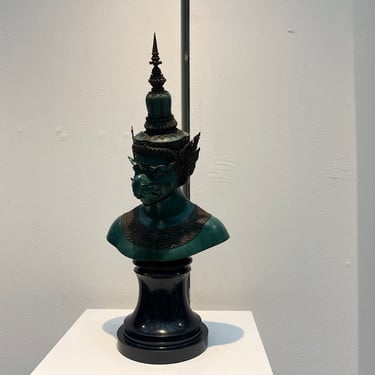
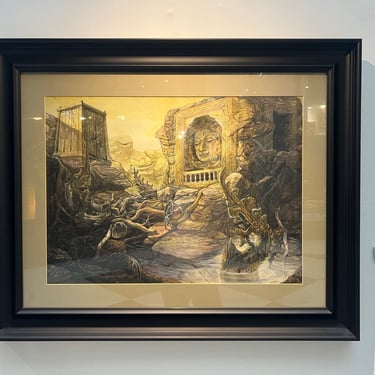
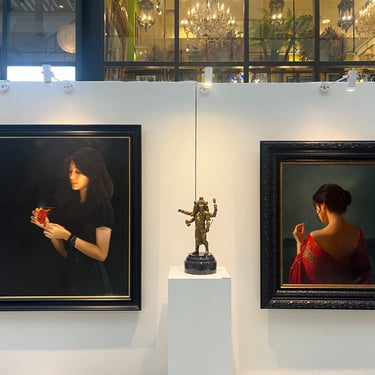

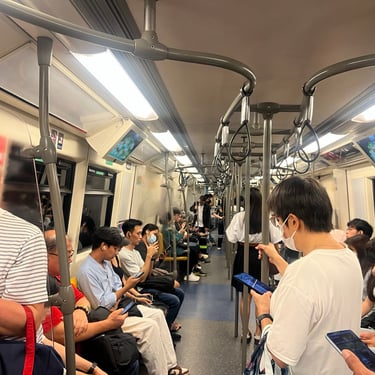

Thank you for reading. To conclude, visiting Suan San Park and buying those two sketchbooks were the most satisfying parts of my trip. See you in the next story!